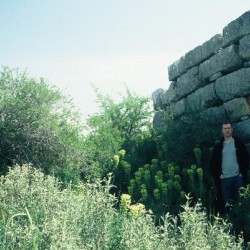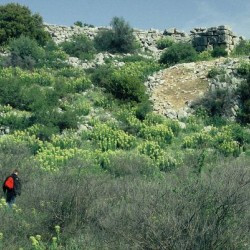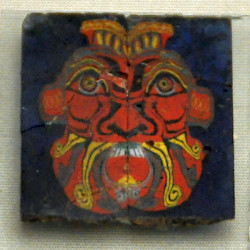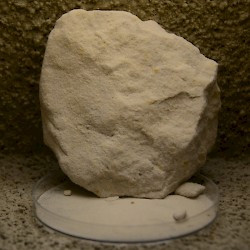Jona Lendering
Jona Lendering read history at Leiden University (MA 1993), specialized in Mediterranean culture at the Amsterdam Free University (MA 1996), and worked at excavations in Holland (Riethoven) and Greece (Halos). After teaching historical theory and ancient history at the Free University for several years, he was one of the founders of a school for history teaching, Livius Onderwijs. Born in Amsterdam, it has now spread to auxiliary locations in Bussum, Dronten, Gouda, Haarlem, Hoorn, Schagen, Zaanstad, and Zoetermeer. As of 2013, Livius Onderwijs has eight teachers, about 500-600 students a year, and offers tours to countries like Italy, Turkey, Iran, and Lebanon. The field trips help to etch into the students' minds some of what they've learned at the school.
Because history is for a large part telling a story, something you do best in your own language, Lendering prefers to publish in Dutch journals. However, he has contributed to the Bryn Mawr Classical Review and Ancient Warfare, while he is the founder of Ancient History Magazine. He is also the publisher and editor of the on-line publication of the Babylonian Chronicles of the Hellenistic Period, a set of important cuneiform sources for the history of the Seleucid and Parthian Near East, transcribed, translated and commented on by Bert van der Spek of the Free University Amsterdam and Irving Finkel of the British Museum. A publication as book is in preparation.
Lendering has written several books and maintains a blog in Dutch. He is the author of several books, including Edge of Empire and Consensus and Crises. For the Livius website, which has received several awards, he collaborates closely with Bill Thayer of LacusCurtius. Lendering is also the webmaster of two daily blogs, the MainzerBeobachter.com and Grondslagen.net.
There are 9380 items in Jona Lendering:
Gla
Gla (Greek: Γλα or Γλας): Mycenaean fortress in Boeotia. The walls of Gla The immense Mycenaean fortress of Gla, which cannot be…

Gla, Mycenean Gate |

Gla, Mycenean walls |

Glannes, Merovingian sarcophagus |
Glanum - Gate
Glanum, Roman arch Several monuments of the Roman city of Glanum have survived. In the area that is called “Les antiques”,…Glanum (St.Rémy-de-Provence)
Glanum: Roman village in southern France, modern St.Rémy-de-Provence. Glanum: arch and mausoleum Glanum is best-known as a Roman town in southern Gaul,…Glanum, Mausoleum
Glanum - Roman mausoleum Several monuments of the Roman city of Glanum have survived. In the area that is called “Les…Glass
Glass: a hard, brittle substance made by fusing silica sand with soda. In Antiquity, it was used to make drinking containers, jewelry, amulets, small windows, and other articles. …

Glass mosaic of a face of Bes |

Glass sand |
Glycerius
Glycerius: emperor of the West-Roman empire (r. 473-474).Names: date of birth and full name unknown 3/5 March 473: appointed by Gundobad Between 19-24 June 474: taken captive by Julius Nepos, resigned died after 480 Successor of: Olybrius Main deeds: 472 The military leader of Italy, Ricimer, takes…Glykon
Glykon or Glycon: snake god, associated with the Greek prophet Alexander of Abonutichus. Statuette of Glykon The cult of the snake god…